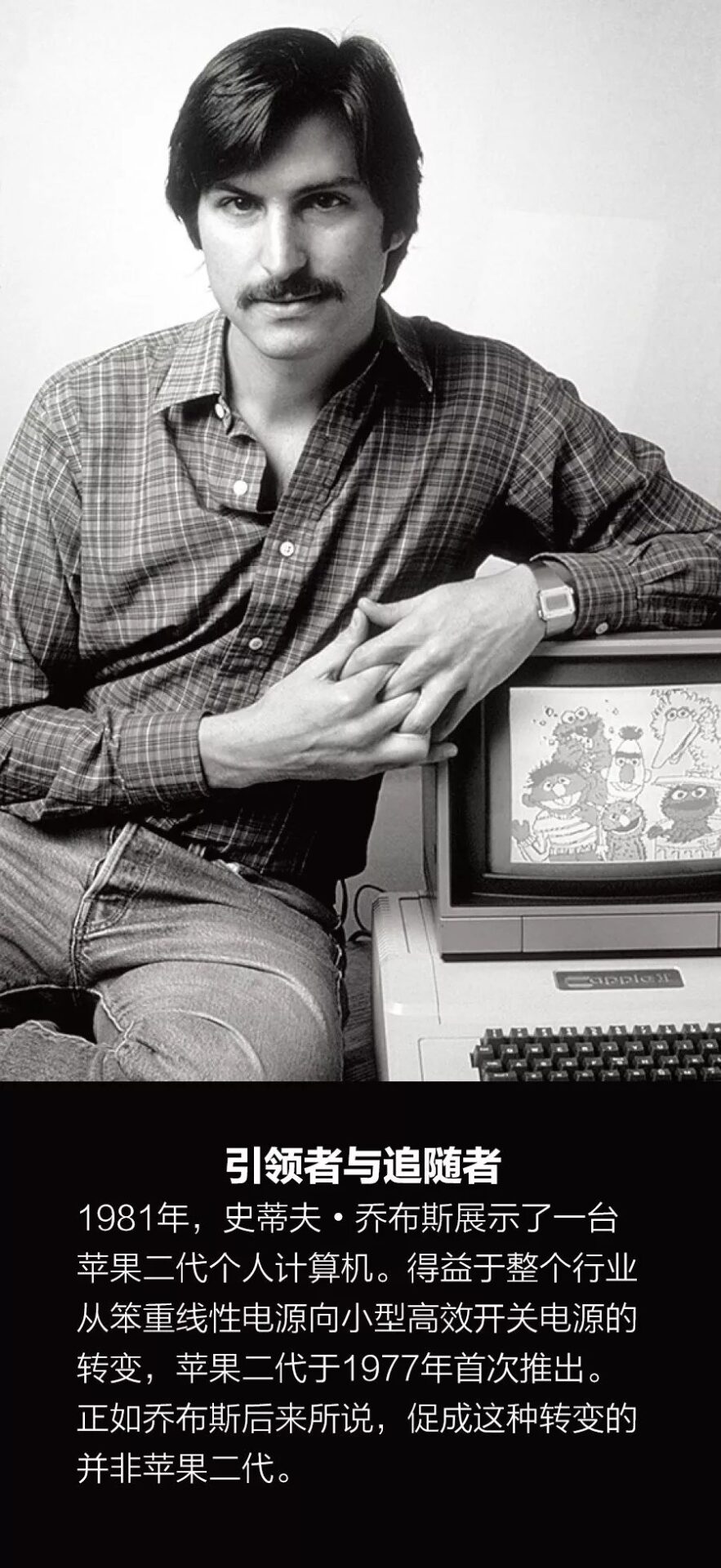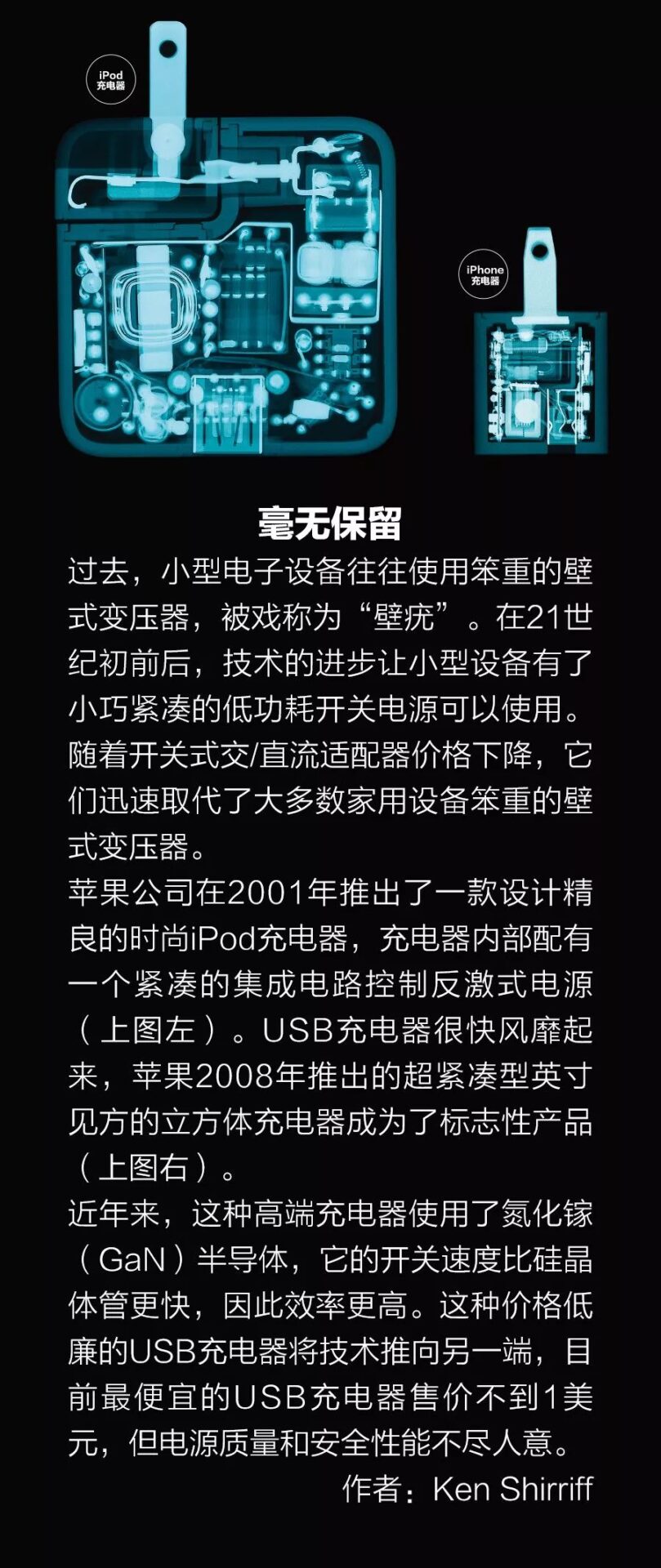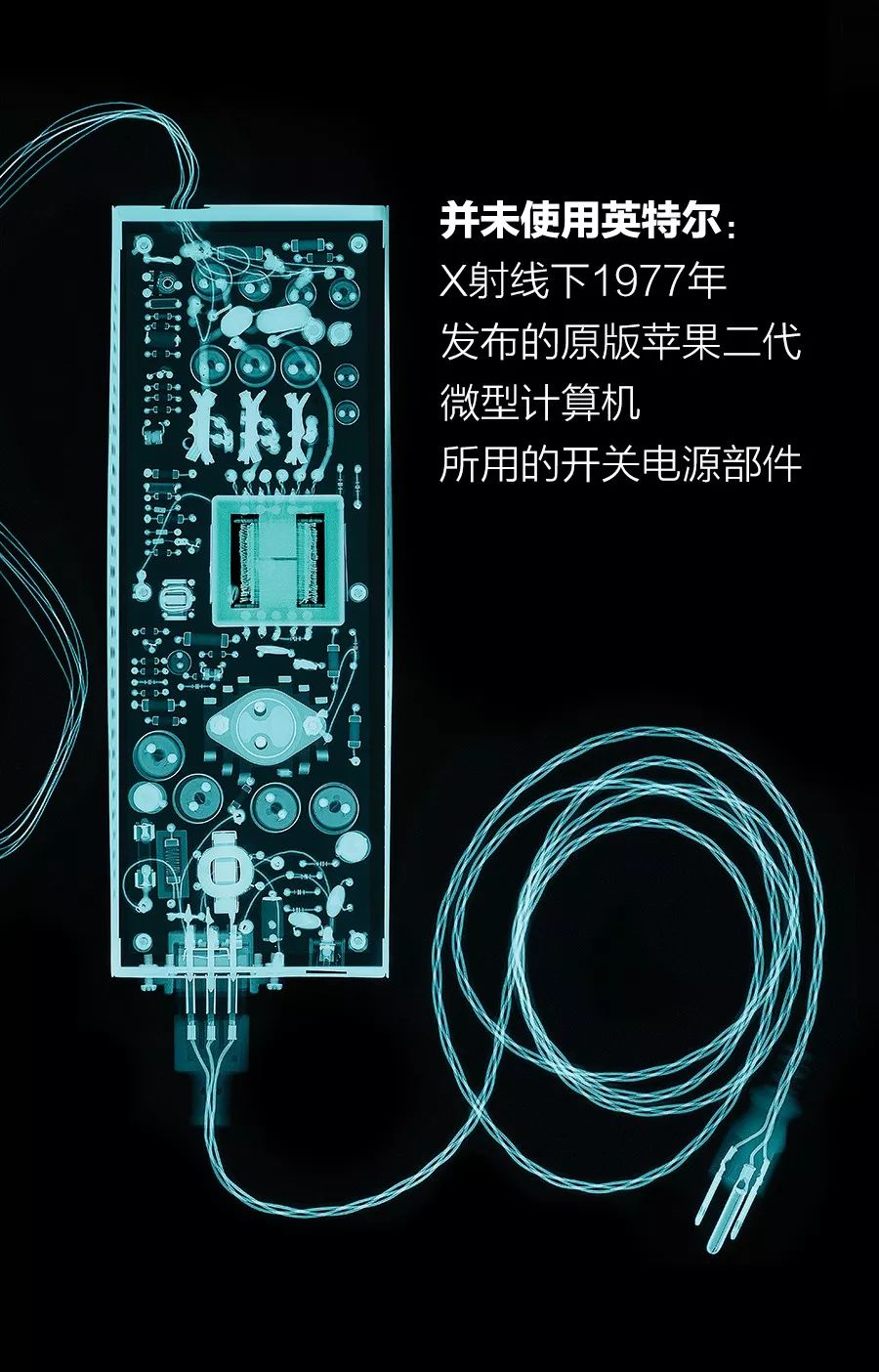Half a century ago, the development of transistors and switch-mode power supplies
completely changed computer power supply design
Tech enthusiasts may know the microprocessor models and physical memory sizes of computers,but they likely know nothing about power supplies. Even for manufacturers, power supply design is often the last consideration.
This is unfortunate because designing the power supply for personal computers requires a lot of effort, representing a significant advancement compared to the circuits used in other consumer electronics before the late 1970s. This breakthrough stems from the leap in semiconductor technology half a century ago, particularly the improvements in switching transistors and innovations in integrated circuits. However, this is a revolution that is not known to the public, even to those familiar with the history of microcomputers.
Power supplies do have supporters, and one of them might surprise you: Steve Jobs. Jobs’ authorized biographer Walter Isaacson said that Jobs had a deep affection for the power supply of the Apple II and its designer, Rod Holt. Isaacson wrote:
Holt did not use a traditional linear power supply; instead, he created a product similar to the power supply used in oscilloscopes. It switches power thousands of times per second, rather than just 60 times, allowing it to store energy in a shorter time and reduce heat release. Jobs later stated, “This switch-mode power supply is as revolutionary as the Apple II logic board. Rod did not receive much recognition in history, but people should remember him. Every computer now uses a switch-mode power supply, and they all copied Rod Holt’s design.”
Jobs’ insights are profound, but I don’t entirely agree with his view, so I did some research. I found that switch-mode power supplies are revolutionary because they replaced simple but inefficient linear power supplies, but this revolution occurred between the late 1960s and mid-1970s. The Apple II, launched in 1977, benefited from this revolution, but it was not the cause of it.

The correction of Jobs’ insights is not just an engineering triviality. Today, switch-mode power supplies are ubiquitous; we use them every day to charge smartphones, tablets, laptops, cameras, and even some cars. They provide power to clocks, radios, home audio systems, and other small appliances. The engineers who truly led this revolution should be recognized. This is also a story worth hearing.
Power supplies for desktop computers like the Apple II can convert AC circuit voltage into DC,providing a very stable voltage for the system. Power supplies can be constructed in various ways, with linear and switching being the two most common.
A typical linear power supply uses a bulky transformer to convert the relatively high voltage AC from the power line into low-voltage AC, which is then converted into low-voltage DC using a classic bridge structure typically composed of four diodes. Large electrolytic capacitors are used to smooth the output of the diode bridge. Computer power supplies use a circuit known as a linear voltage regulator, which can reduce the DC voltage to an ideal level and maintain a constant voltage even when the load changes.
The design and manufacture of linear power supplies are not complex.They use inexpensive low-voltage semiconductors but have two main drawbacks.One is that they require large capacitors and bulky transformers, making them impossible to be as compact, lightweight, and convenient as the chargers for smartphones and tablets.The other is the linear regulator, a transistor-based circuit that converts excess DC voltage (higher than the specified output voltage) into waste heat.As a result, typically more than half of the energy consumed by such power supplies is wasted, and they often require large metal heatsinks or fans for cooling.

The operation of switch-mode power supplies is quite different: in a typical switch-mode power supply, the AC line input is converted into high-voltage DC, switching tens of thousands of times per second. The high frequency used allows for lighter transformers and smaller capacitors. Special circuits can precisely measure the switching time to control the output voltage. These power supplies do not require linear voltage regulators, resulting in very little wasted energy. Their efficiency typically ranges from 80% to 90%, thus releasing much less heat.
However, switch-mode power supplies are much more complex than linear power supplies, making their design more challenging. Additionally, they have higher component requirements, demanding high-voltage power transistors that can effectively switch at high speeds.
By the way, some computer power supplies are neither linear nor switch-mode. There is a primitive but effective power supply technology that involves running a motor without power and using that motor to drive a generator to produce the required output voltage. Electric generators have been around for decades, dating back at least to the 1930s with IBM’s card punch machines and continuing to be used in Cray supercomputers in the 1970s.
Another scheme popular from the 1950s to the 1980s was the use of ferrite resonant transformers—a special transformer that provides a constant voltage output. There were also saturable reactors, a type of controllable inductor used in the power regulation of vacuum tube computers in the 1950s. It reappeared in some modern personal computer power supplies as a “magnetic amplifier,” providing additional voltage regulation. Ultimately, these quirky methods largely gave way to switch-mode power supplies.
Electrical engineers have known the principles of switch-mode power supplies since the 1930s,but the application of this technology was limited in the vacuum tube era. At that time, some power supplies used special mercury-containing tubes (known as thyratrons) that can be seen as primitive low-frequency switch-mode regulators, such as the REC-30 teletype power supply from the 1940s and the power supply used in the IBM 704 computer in 1954. After the introduction of power transistors in the 1950s, switch-mode power supplies developed rapidly. Pioneer Magnetics began manufacturing switch-mode power supplies in 1958. General Electric announced an early design for a transistor switch-mode power supply in 1959.
In the 1960s, NASA and the aerospace industry provided the main impetus for the development of switch-mode power supplies, as space applications prioritized the advantages of compact size and high efficiency over low cost. For example, the 1962 Telstar communication satellite (the first satellite to transmit television images) and the U.S. Minuteman missile both used switch-mode power supplies. Over time, the cost of switch-mode power supplies gradually decreased, leading to their widespread adoption. For example, in 1966, Tektronix used switch-mode power supplies in portable oscilloscopes, cutting off power supply current or using battery power.
As power supply manufacturers began selling switching devices to other companies, this trend began to accelerate. In 1967, ROAssociates introduced the first 20 kHz switch-mode power supply product, claiming it was the first commercially successful switch-mode power supply. Nippon Electronic Memory Industry Co. began developing standardized switch-mode power supplies in Japan in 1970. By 1972, most power supply manufacturers were selling or preparing to sell switch-mode power supplies.
About this time, the computer industry began using switch-mode power supplies, including the PDP-11/20 microcomputer from Digital Equipment Corporation in 1969 and the HP 2100A microcomputer in 1971. An industry publication from 1971 stated that companies using switch-mode regulated power supplies “read like a who’s who of the computer industry, including IBM, Honeywell, Univac, Digital Equipment Corporation, Burroughs, and RCA.” By 1974, small computers using switch-mode power supplies included Nova2/4 from General Data, TI’s 960B, and systems from Interdata. In 1975, switch-mode power supplies were applied to the HP 2640A display terminal, IBM’s Selectric Composer, and the IBM 5100 portable computer. By 1976, General Data used switch-mode power supplies in half of its systems, while HP used them in smaller systems like the 9825A desktop computer and the 9815A calculator. In 1973, switch-mode power supplies also appeared in home appliances, powering some color televisions.
At that time, electronics magazines widely reported on switch-mode power supplies in both advertisements and articles. As early as 1964, Electronic Design recommended switch-mode power supplies that could improve efficiency. The October 1971 cover of Electronics World featured a 500-watt switch-mode power supply and an article titled “The Switching Regulator Power Supply.” In 1972, Computer Design explored switch-mode power supplies in detail and their increasing prevalence in computers, although it also mentioned that some companies remained skeptical. In 1976, the cover story of Electronic Design claimed, “Suddenly, switching became easier,” and introduced a new switch-mode power supply controller integrated circuit. Electronics published a lengthy article on the topic; Powertec advertised the advantages of its switch-mode power supplies with the slogan, “The switch conversion is changing dramatically”; Byte announced that Boschert would provide switch-mode power supplies for microcomputers.
Robert Boschert was one of the key developers of this technology. He left his job in 1970 and began making power supplies at his dining room table. He sought to simplify the design so that it could compete with linear power supplies on cost. By 1974, he had mass-produced low-cost printer power supplies, and in 1976, he produced low-cost 80-watt switch-mode power supplies. By 1977, Boschert’s company had grown to 650 employees. It manufactured power supplies for satellites and the Grumman F-14 fighter jet, and later produced computer power supplies for companies like HP and Sun.
In the late 1960s and early 1970s, companies like SSPI, Siemens Edison Swan Company (SES), and Motorola introduced low-cost high-voltage high-speed transistors, making switch-mode power supplies mainstream. The increased switching speed of transistors can improve efficiency, as heat is dissipated during the switching process, and the faster the device can perform this conversion, the less energy is wasted.
At that time, the speed of transistors was increasing dramatically. Indeed, the rapid development of transistor technology led the editors of Electronics World to claim in 1971 that the 500-watt power supply on the cover could not be made with transistors that had only been introduced 18 months earlier.
Another significant advancement occurred in 1976. At that time, Robert Mammano, co-founder of Silicon General, introduced the first integrated circuit that controlled the switch-mode power supply for teletypes. His SG1524 controller integrated circuit greatly simplified power supply design, reduced costs, and led to a surge in sales.
Around 1974, anyone with a slight understanding of the electronics industry knew that a true revolution was taking place in the field of power supply design.
The Apple II personal computer was launched in 1977.It featured a compact, fanless switch-mode power supply capable of delivering 38 watts at 5 volts, 12 volts, -5 volts, and -12 volts. It used Holt’s simple design, known as the offline flyback converter topology for switch-mode power supplies. Jobs claimed that every computer today copies Holt’s revolutionary design, but was this design truly revolutionary in 1977? Did other computer manufacturers really copy it?
The answer is no. At the time, companies like Boschert were also selling similar offline flyback converters. Several specific features of Holt’s power supply were patented, but these features were never widely used. The control circuit built with discrete components, which was the construction method of the Apple II’s circuit, proved to be a technological dead end. The future of switch-mode power supplies belonged to dedicated controller integrated circuits.

If there is a microcomputer that has indeed had a lasting impact on power supply design, it should be the IBM personal computer launched in 1981. At that time, just four years after the release of the Apple II, power supply technology had undergone significant changes. Both early personal computers used offline flyback power supplies with multiple outputs, but that was where their similarities ended. Their drive, control, feedback, and voltage regulation circuits were not the same. The IBM personal computer power supply used an integrated circuit controller, containing about twice the components of the Apple II power supply. These additional components provided better stabilization of the output voltage and would signal “power good” when all four voltages were accurate.
In 1984, IBM released an upgraded personal computer called the IBM Personal Computer AT. Its power supply adopted various new circuit designs, completely eliminating the early flyback topology. It quickly became the industry standard until Intel introduced the ATX form factor specification in 1995. The ATX form factor specification defined the ATX power supply, which remains an industry standard today.
After the introduction of the ATX standard, computer power supply systems became increasingly complex. In 1995, the high-energy Pentium microprocessor was released, requiring lower voltage and higher current, which the ATX power supply could not meet. To address this, Intel introduced the Voltage Regulator Module (VRM)—a DC-DC switch-mode regulator installed next to the processor. It reduced the power supply’s 5 volts down to the 3 volts used by the processor. Many computers’ graphics cards also include voltage regulator modules to drive their high-performance graphics chipsets.
Today, fast processors may require voltage regulator modules to provide up to 130 watts of power, far exceeding the 0.5 watts required by the Apple II’s 6502 processor. In fact, a single modern processor chip can consume more than three times the power of the entire Apple II computer.
The increase in computer power consumption has become a contributing factor to environmental issues, prompting initiatives and regulations to improve power supply efficiency. In the United States, government Energy Star programs and over 80 industry-leading certifications have encouraged manufacturers to produce more “green” power supplies. Numerous technologies have emerged to achieve this: more efficient standby power supplies and startup circuits, resonant circuits that reduce power losses in switching transistors, and “active clamp” circuits that replace switching diodes with more efficient transistor circuits. Over the past decade, advances in power MOSFETs and high-voltage silicon rectifier technologies have also driven continuous improvements in power supply efficiency.
In other areas, switch-mode power supply technology continues to evolve. Today, many power supplies no longer use analog circuits but instead use digital chips and software algorithms to control output. The design of power supply controllers is no longer just a matter of hardware design but also involves programming. Digital power management supports communication between the power supply and other parts of the system, improving efficiency and logging. These digital technologies are currently primarily used in servers but have also begun to influence the design of desktop computers.
Jobs believed more people should know about Holt,and believed that “Rod did not receive much recognition in history, but people should remember him,” but the true history is not so. Even the best power supply designers are unlikely to be known by outsiders. In 2009, the editors of Electronic Design welcomed Boschert into the Engineering Hall of Fame. Robert Mammano received a Lifetime Achievement Award from Power Electronics Technology in 2005. For his innovations in switch-mode power supplies, Rudy Severns received another Lifetime Achievement Award in 2008. However, these outstanding figures in the field of power supply design are not even well-known on Wikipedia.
Jobs emphasized multiple times that Holt was overlooked, which led to Holt’s design appearing in dozens of popular articles and books about Apple, including Paul Ciotti’s “Revenge of the Nerds” published in California Magazine in 1982, and Isaacson’s bestselling biography, “Steve Jobs,” published in 2011. Therefore, it is ironic that although Rod Holt’s design for the Apple II was by no means revolutionary, he may have become the most famous power supply designer of all time.
IEEE Spectrum
Technology Review
Official WeChat Public Platform
Recommended Articles
Wall Street Trials Shortwave Radio Communication
Pioneers of Digital Computers and Transistors–Italy’s Hooli
TSMC VP Huang Hansheng: Transistors can achieve 0.1 nanometers by 2050, at the scale of hydrogen atoms




